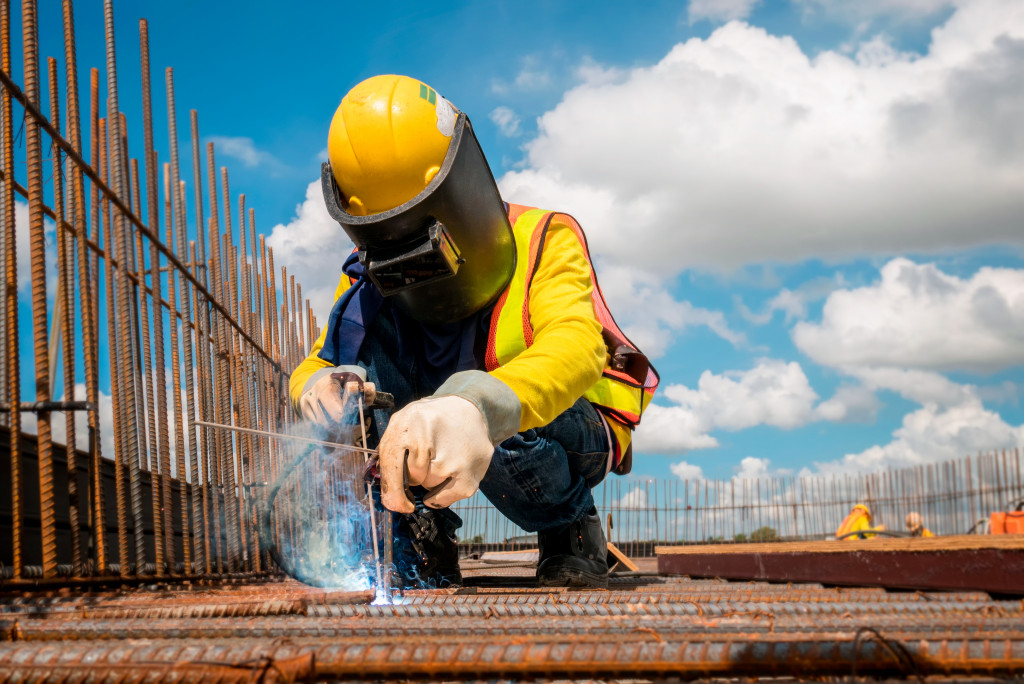During the start of the crisis, production levels went stagnant. Lockdowns stopped operations because construction companies were unable to receive their supplies. Many workers feel sick, and companies struggle to keep their production on schedule due to many business complications brought by the crisis. But as we slowly rebuild economies and with investors starting to embrace construction projects once more, companies are trying their best to revisit their plans.
Construction companies are constantly on the move to innovate ways to keep their brands afloat. They started adopting many strategies, from digitizing their processes to enforcing stricter health and safety precautions. They do this to navigate current pandemic challenges and manage future business growth.
Below are three ways the current crisis is changing the construction industry.
Stricter Health and Safety Protocols
Even before the crisis, construction companies have been following occupational health and safety protocols. They hire only skilled workers who have enough experience to take on construction jobs. They also require applicants to book and pass an online Construction Skills Certification Scheme or CSCS green card course.
Construction companies make sure they offer continuous training to their workers to ensure construction site safety. They invest in the right personal protective equipment and safety signs to remind workers to practice safety precautions. When the pandemic hit, construction companies had to make sure their workers’ health was also made into their priorities.
Businesses had to make sure their workers now work with caution to reduce the spread of the virus within the workplace. They also work hard in finding ways to reduce exposure with their vendors and suppliers. They enforced stricter rules and invested in new technology to reduce contact within the construction site and between their workers and suppliers.

Flexible Supply Chain
The lockdowns made construction companies rethink their supply chain. Those constantly outsourcing services and materials from another state or even abroad had to find ways to obtain supplies on time. For the most part, they had to turn to local suppliers to not further compromise their timeline.
Some had to diversify suppliers to make ends meet. They also do this to avoid having too many suppliers clustered in a single area. Again, they turn to local vendors to reduce the exposure they are subjecting their workers to.
Suppliers are also having a hard time keeping up with the demands of their clients due to the crisis. Many of their workers got sick because of the virus, while others could not go to work for fear of being exposed. Some cannot go to work because they live with someone who is part of the high-risk group during the pandemic.
With the many issues suppliers are facing, they are now having a hard time fulfilling orders. What some construction companies did was to pay their suppliers early to ensure they could minimize supply interruptions. This helps suppliers sustain their operations while being able to prioritize companies that paid for their offers early.
Modernized and Digitalized Processes
The construction industry was never late when it came to using tech innovations. Professionals are embracing different tech to boost construction site safety, efficiency, and speed. But because of the pandemic, they had to turn to more innovations to reduce the building process.
Nowadays, more construction companies are relying on robots to help workers boost their productivity. Collaborative robots take over different construction sites to improve the workplace’s safety while helping their human counterparts get their job done. 3D printing and other technologies are helping build affordable housing at a faster rate.
Even the way construction companies communicate with their employees, suppliers, and clients is digitized. They use different communication techniques to effectively get the message across even under the new normal. This makes communication seamless while tightening collaboration between workers.
Digital collaboration tools make it easy for engineers and designers to replan their projects. They use building-information modelling (BIM) to ensure they communicate and collaborate effectively even as they work from different sites. 4D and 5D simulation, on the other hand, helps them re-optimize their schedule to keep up with their timeline.
Construction companies try to digitize every possible task to ensure business productivity. They use different technologies to monitor their employee’s health. They also changed the way they obtained supplies and turned to online tools to order construction materials.
Construction companies continue to embrace tech to manage their business promptly. They had to use digital interventions to ensure productivity and efficiency despite the crisis. We can expect this to continue now that we are living under the new normal.
